30 Design Strategies and Tactics from 40 Years of Investigation
Appendix: Further information and examples
Think of longer timescales for learning
This is true even of basic facts and skills, if they are to be usable parts of your mathematical toolkit. Teaching, which time makes into a linear sequence, tends to involve a connection only to the previous step, without the links to other topics and applications that underlie robust useful learning.
Lesson objectives setting out goals for each lesson reinforce this defect; the activity sequence in a well-designed lesson should have multiple goals, building up across the unit/module to a coherent whole.
To explore this point through an example, the reader may like to devise learning objectives for each of the worksheets in Unit A of The Language of Functions and Graphs.
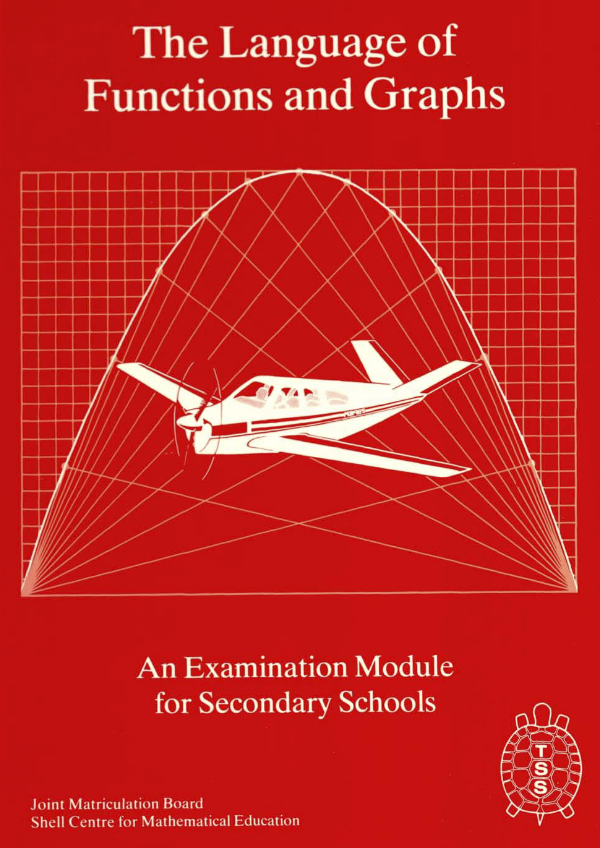
Link to the materials
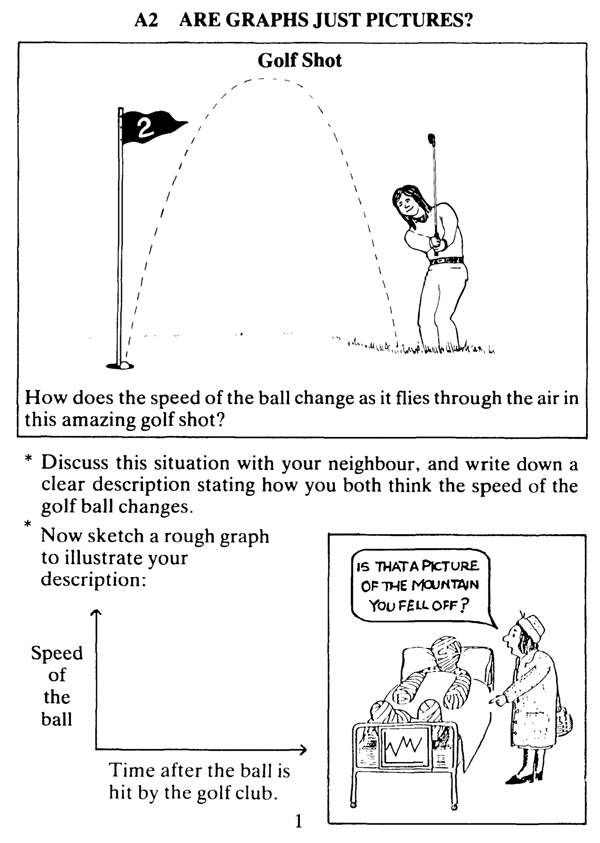
Enlarge…
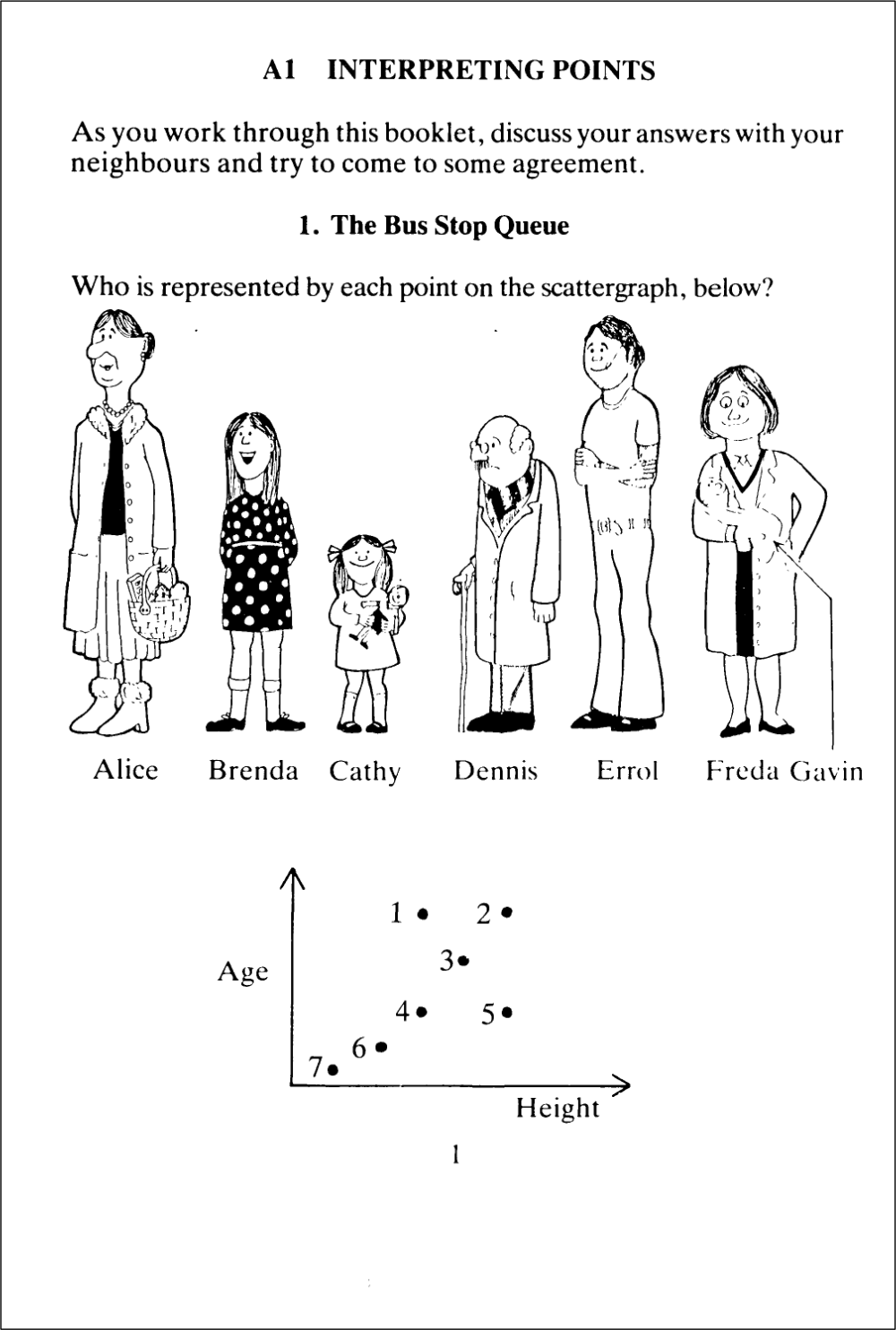
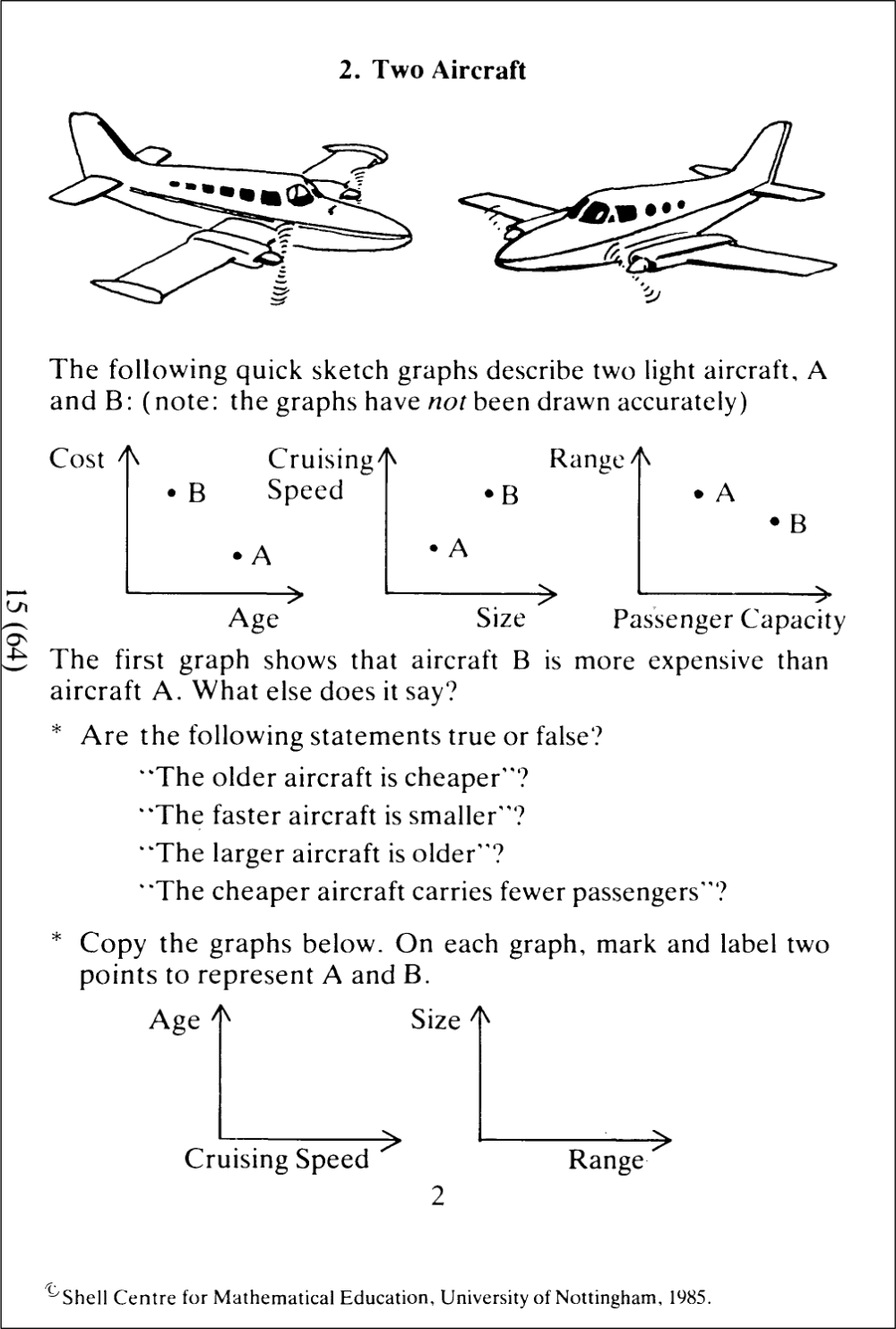
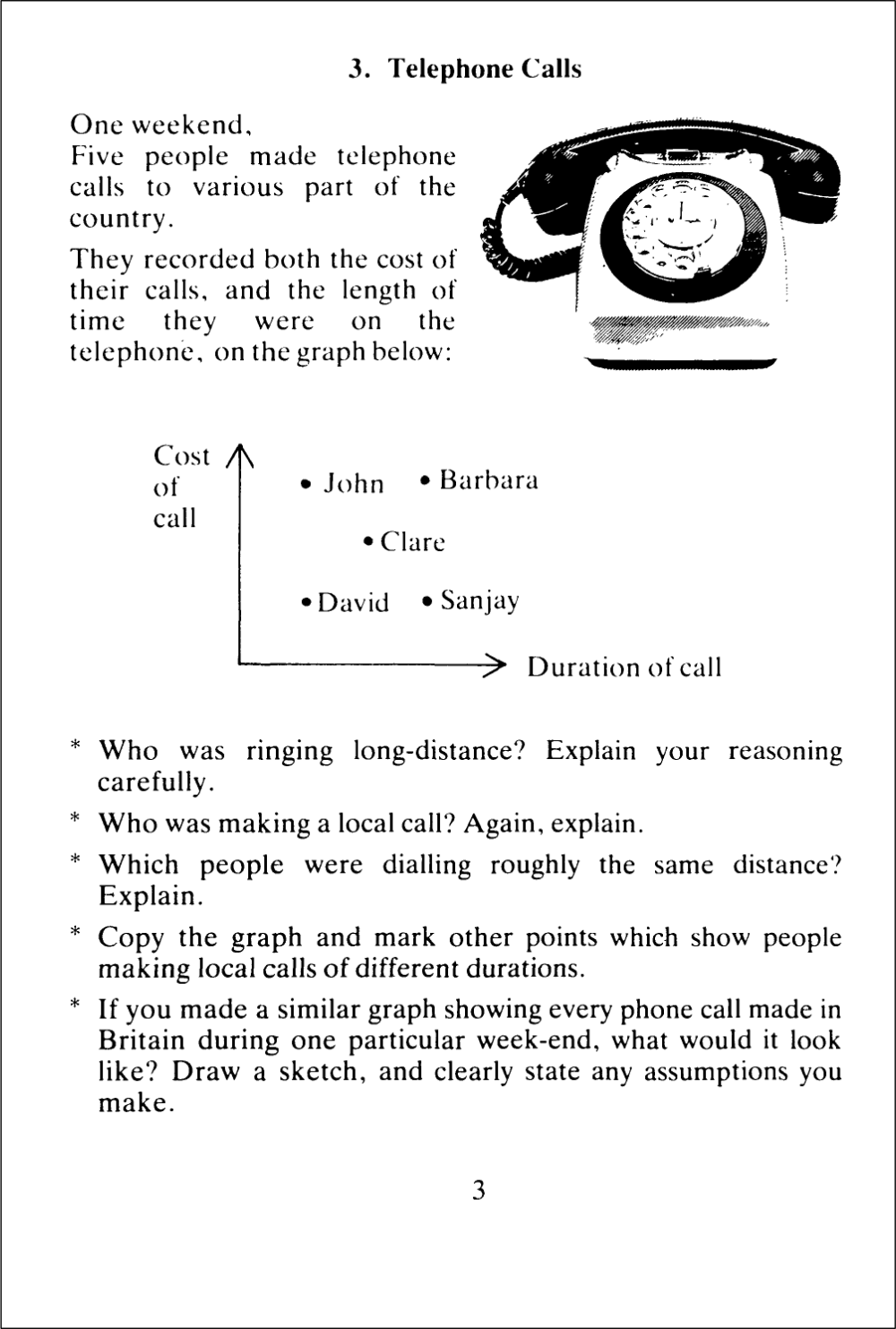
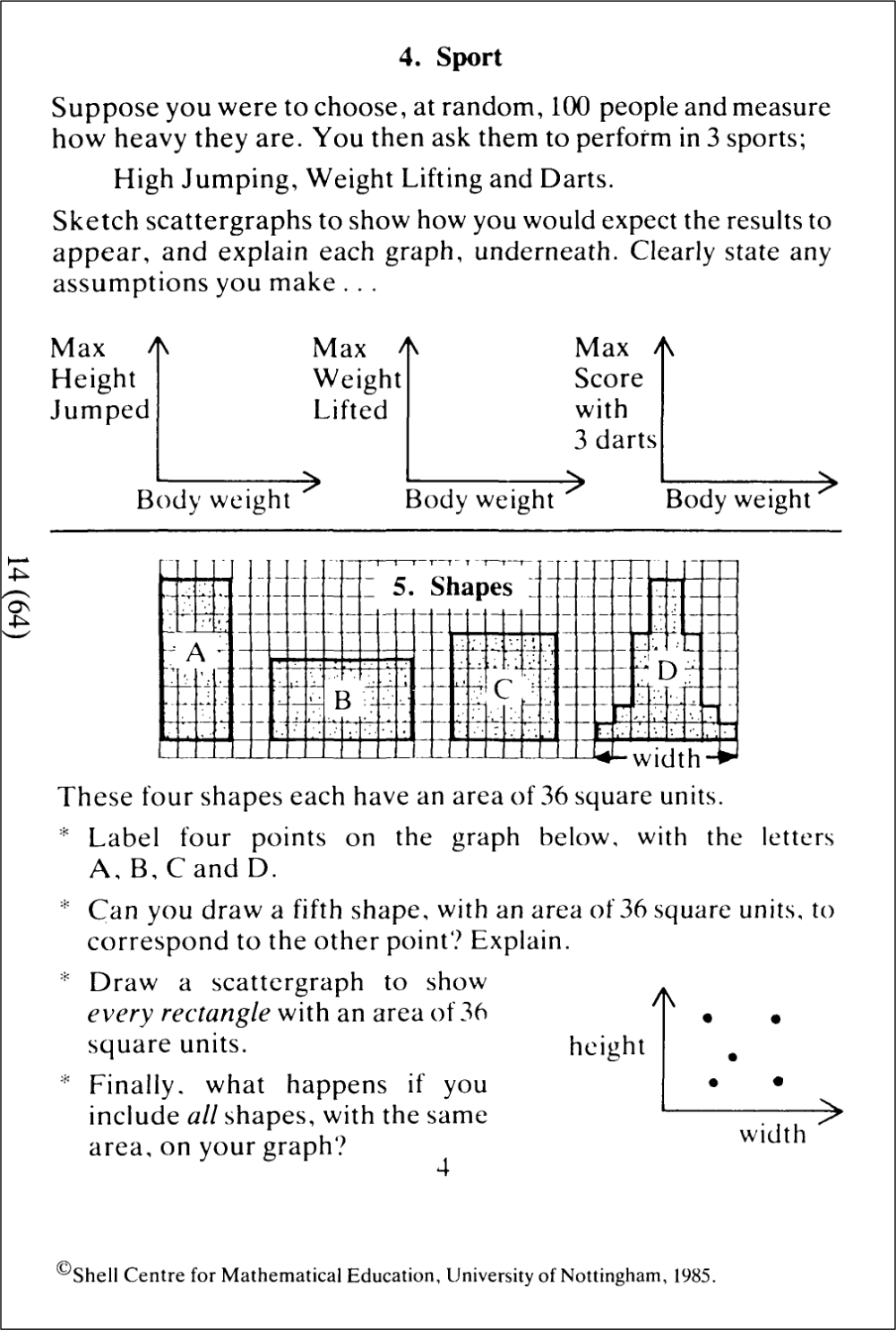
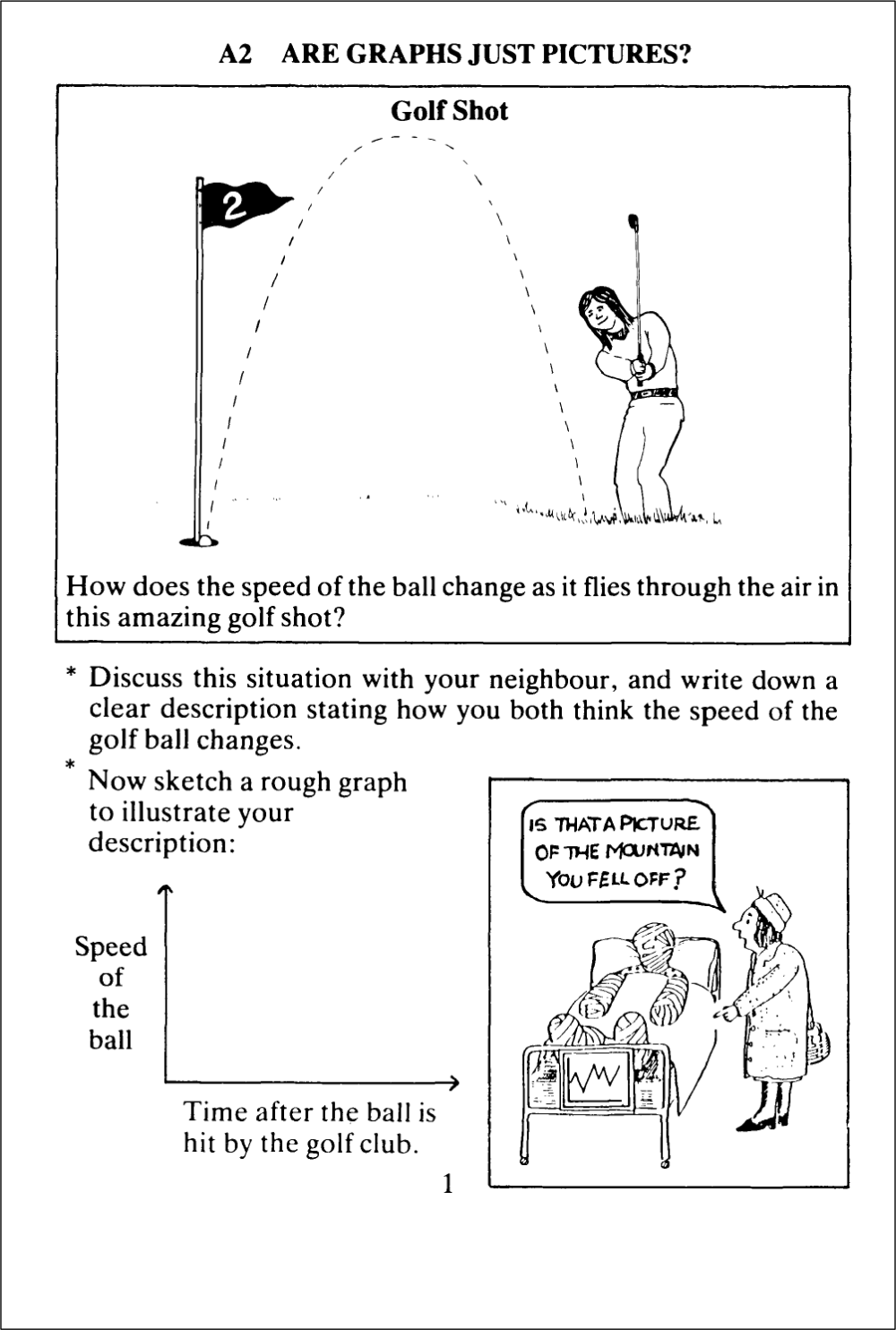
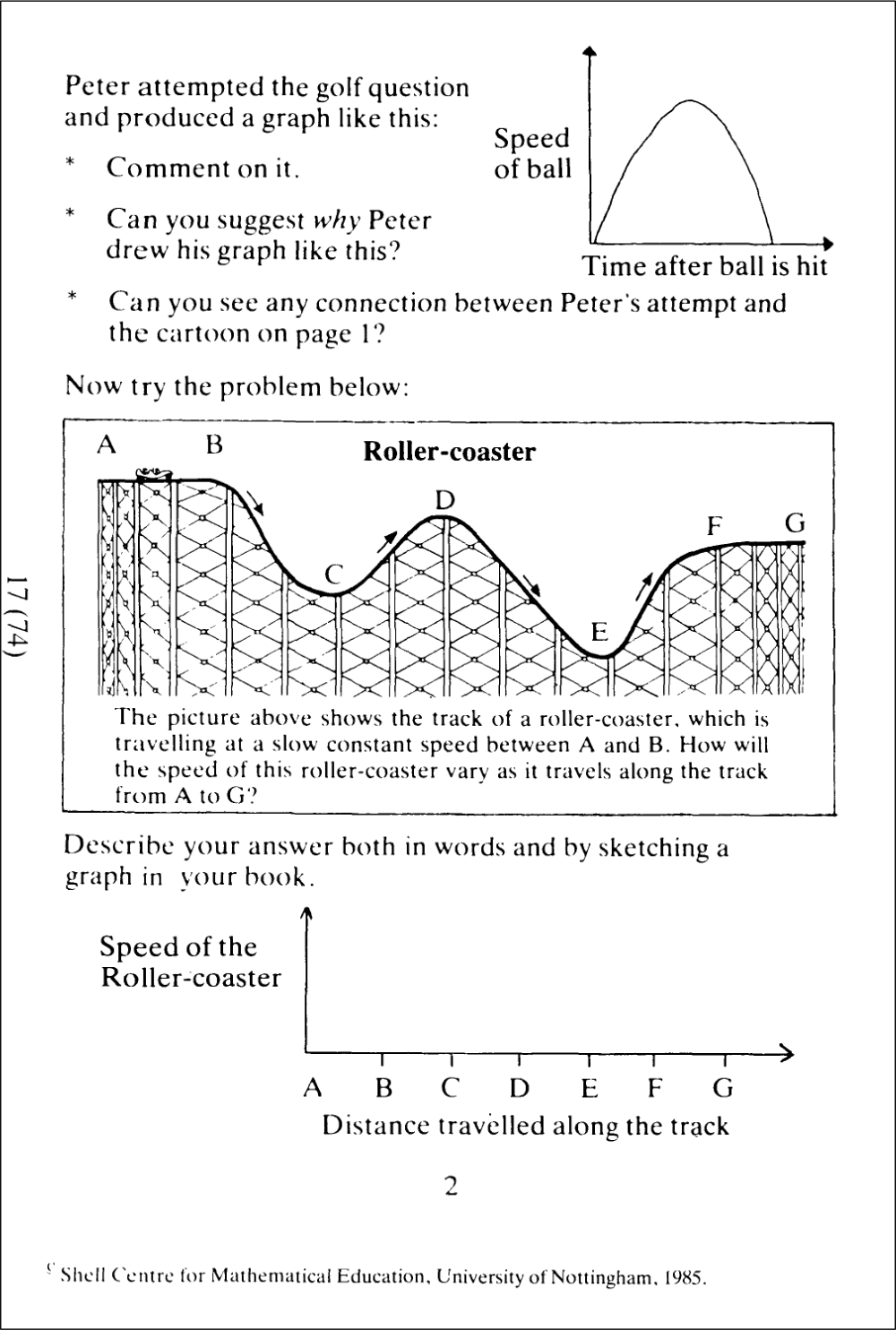
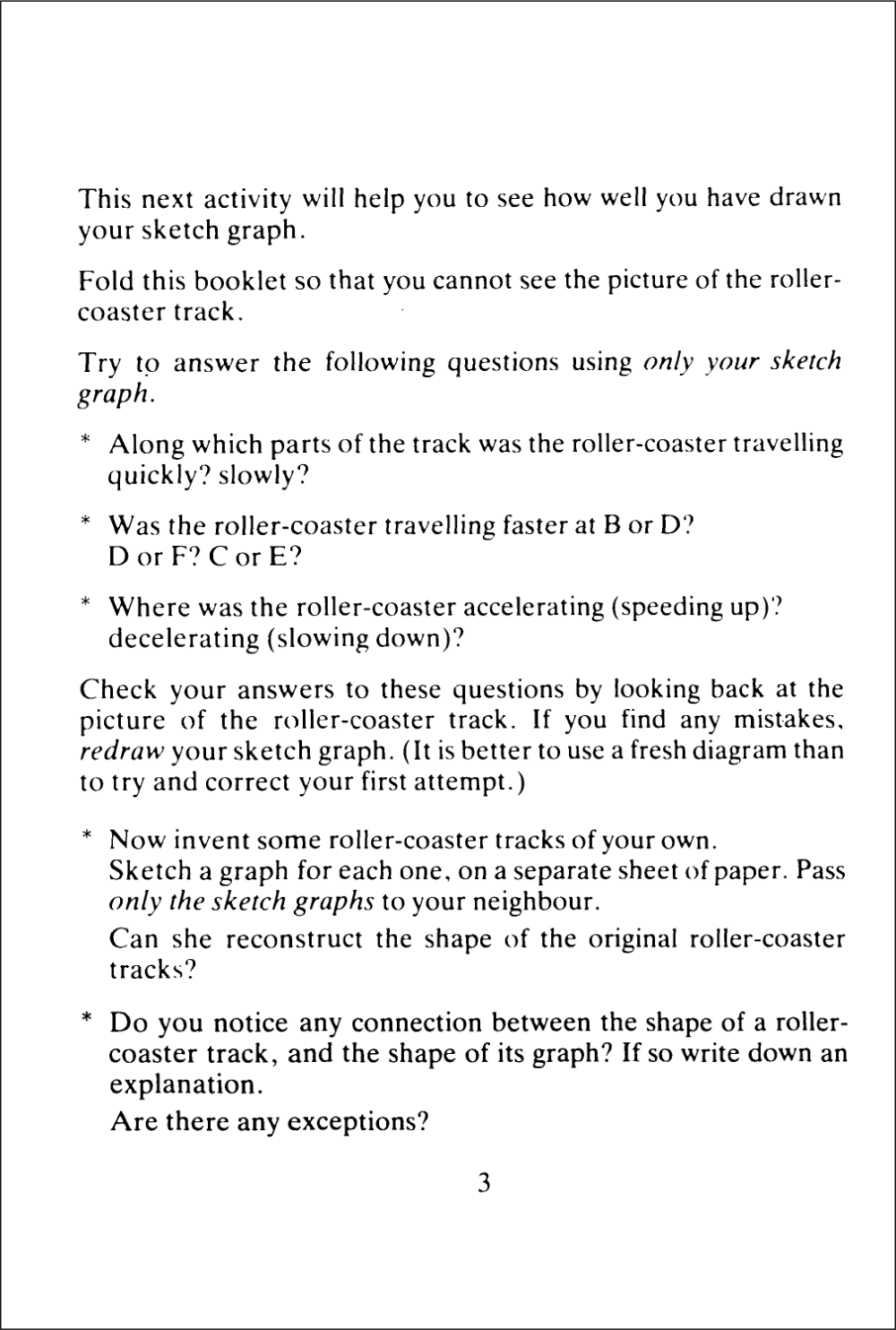
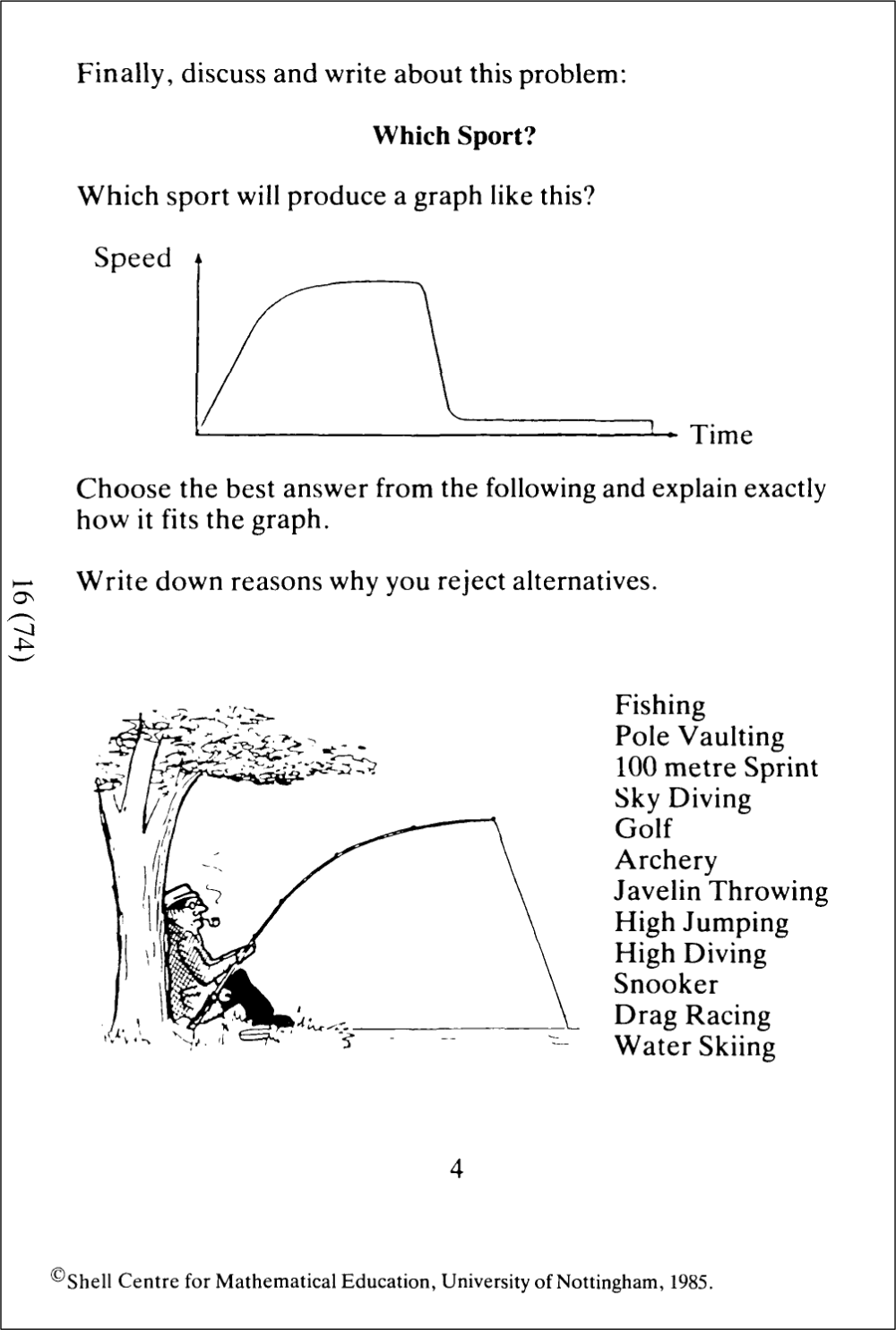
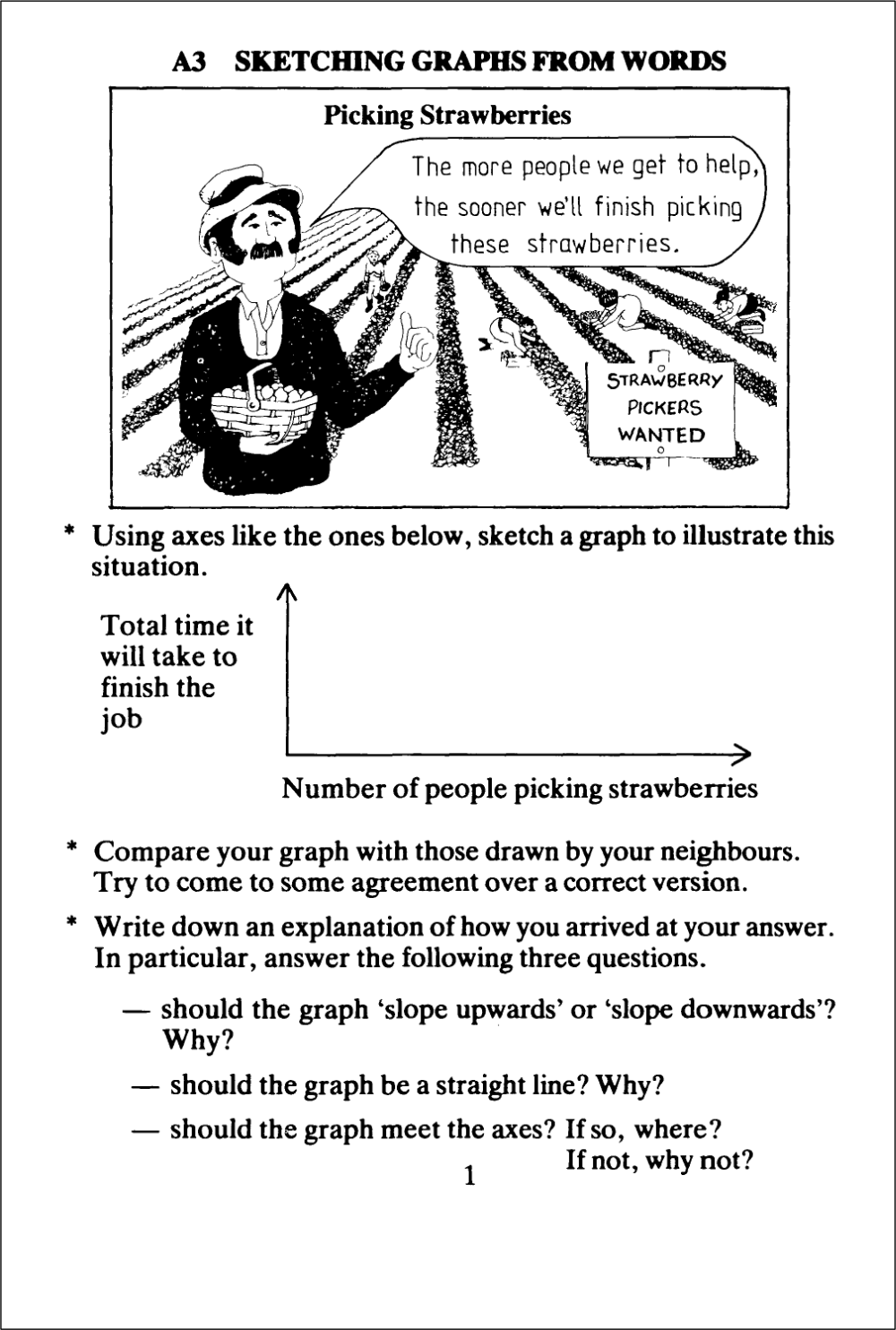
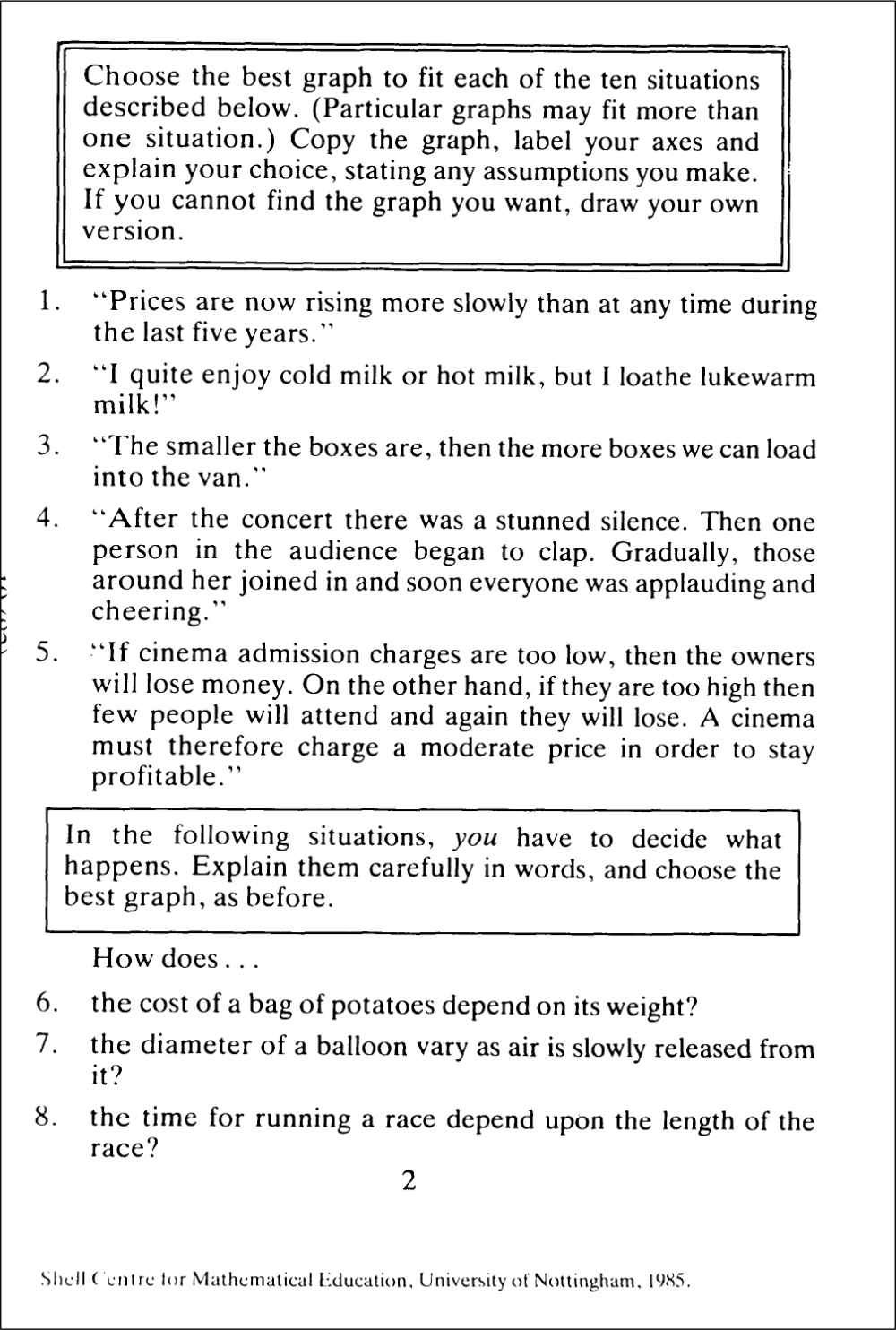
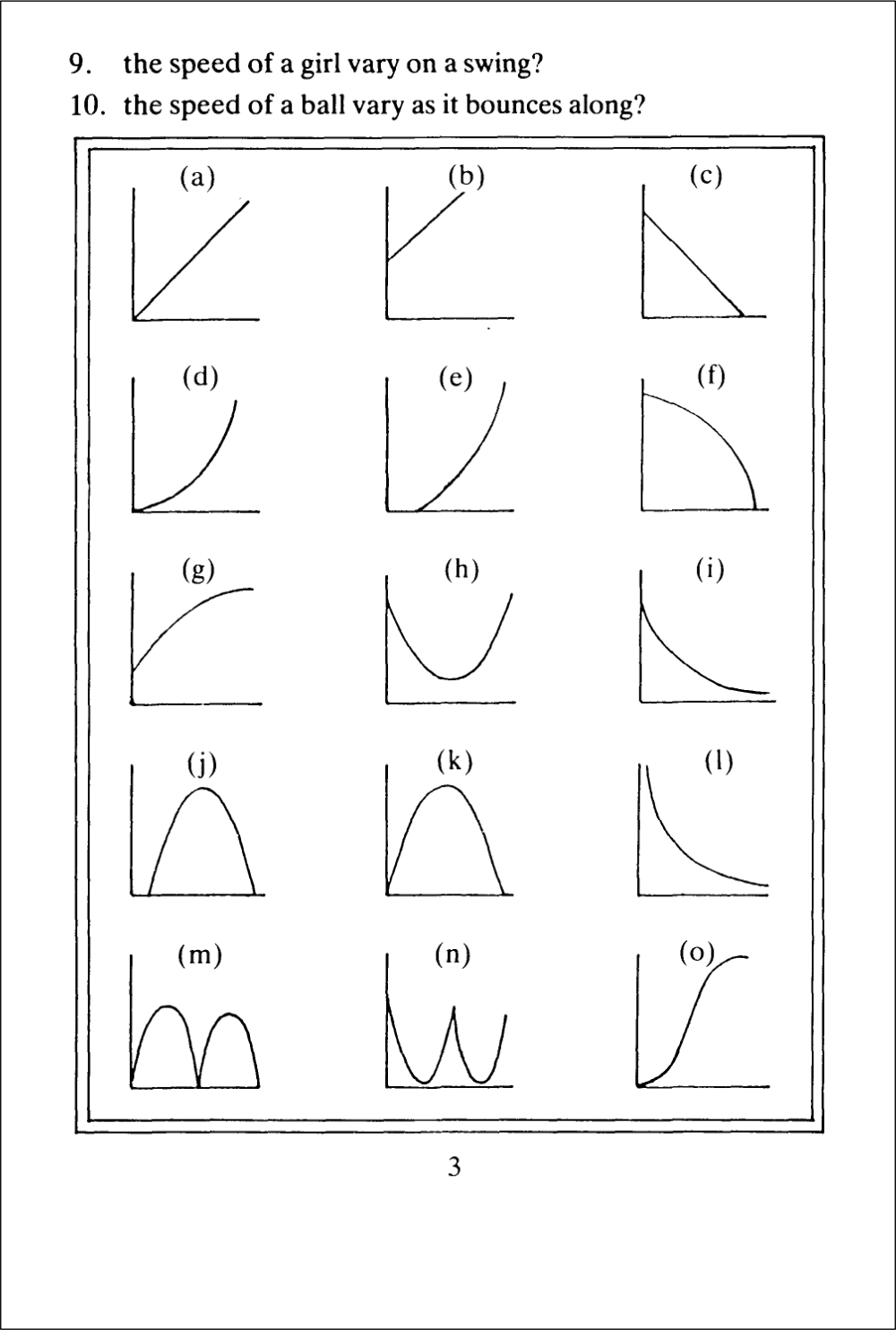
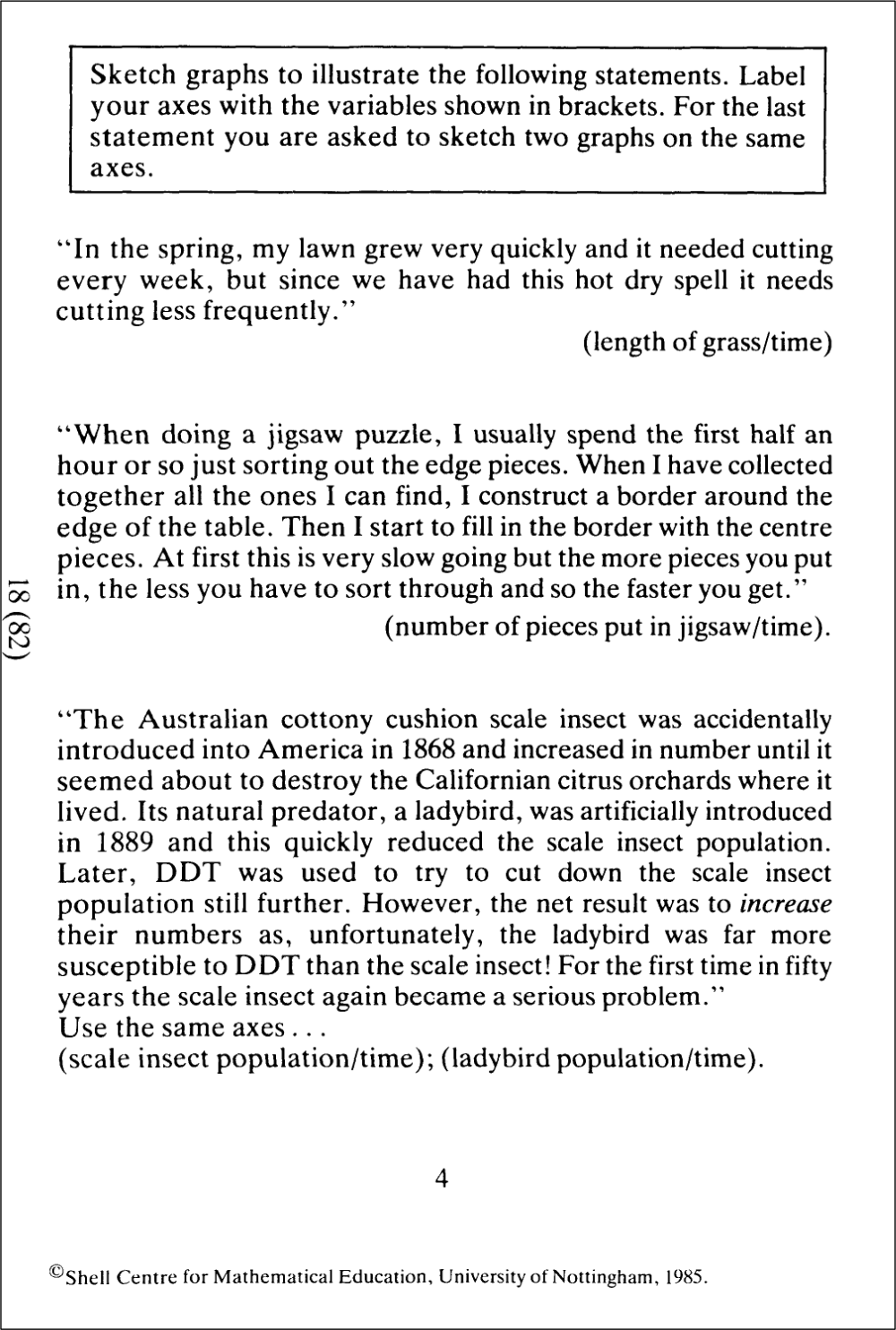
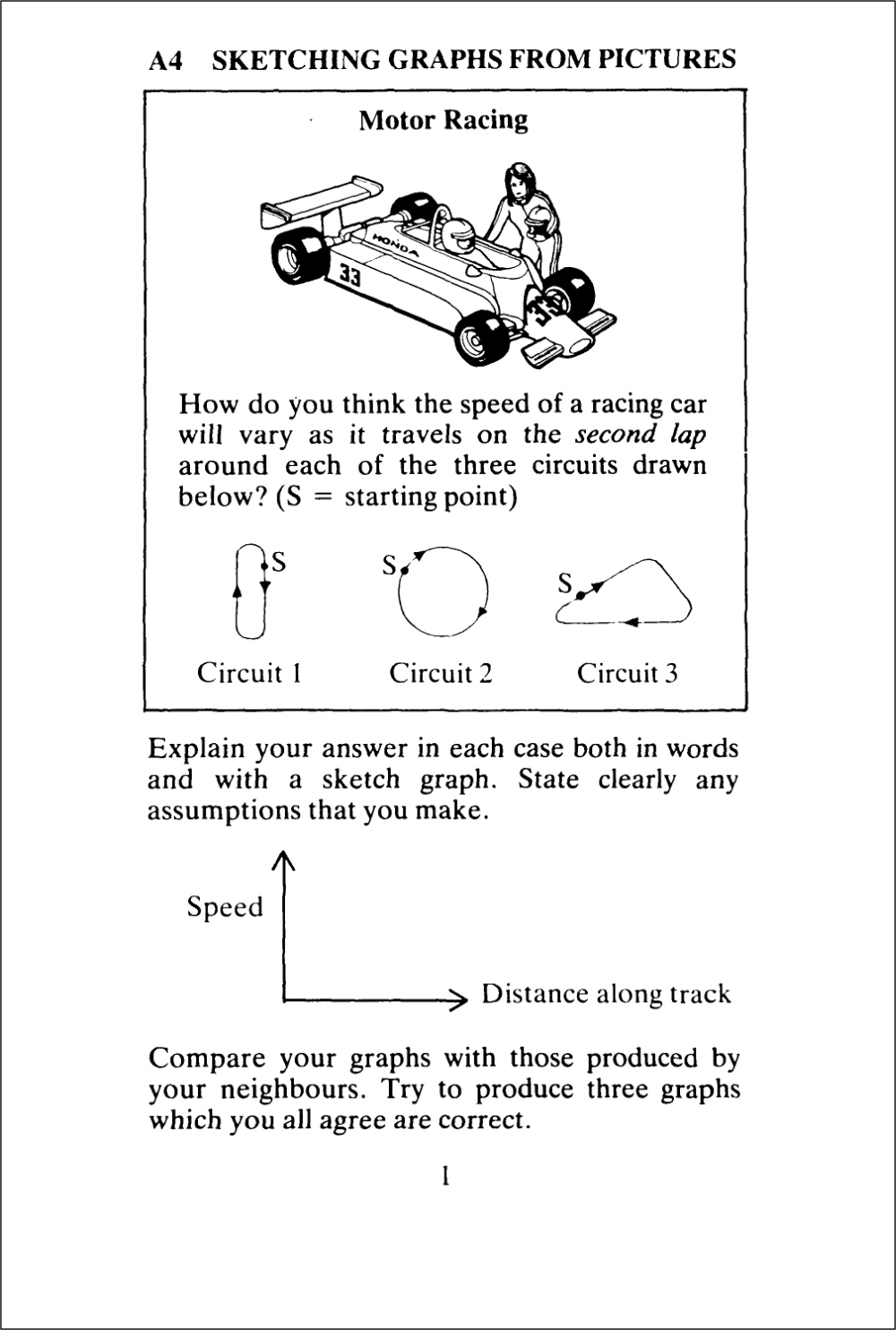
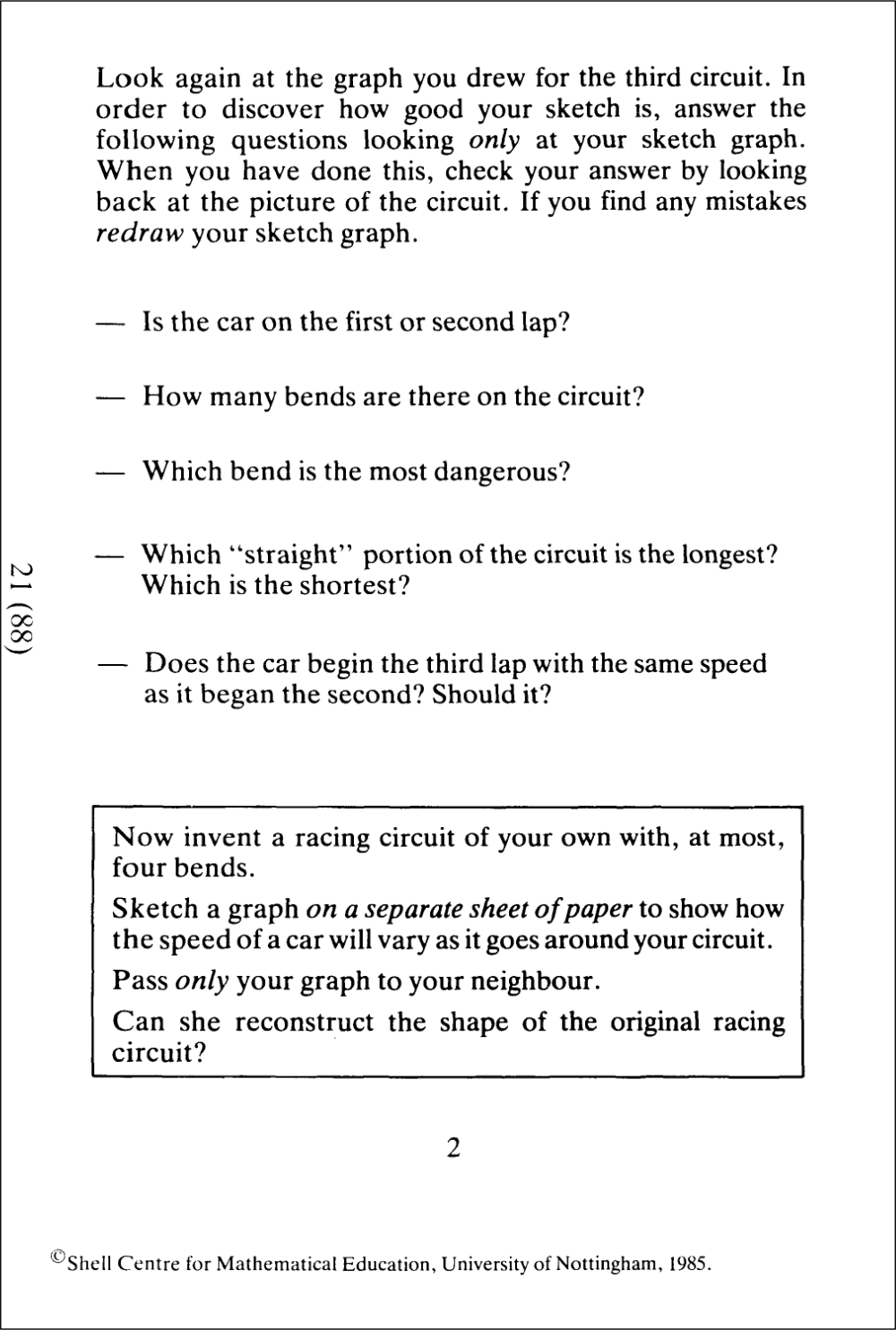
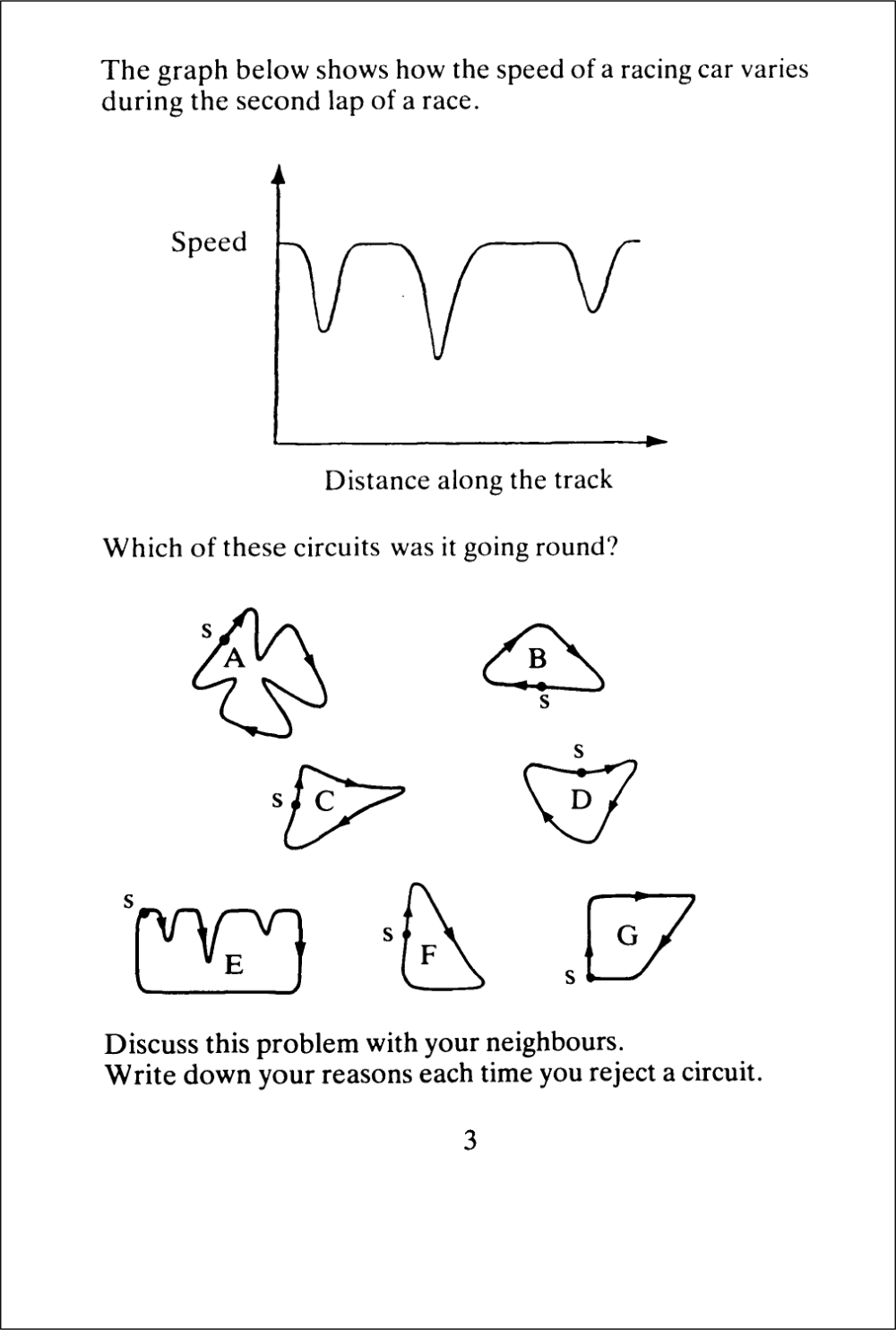
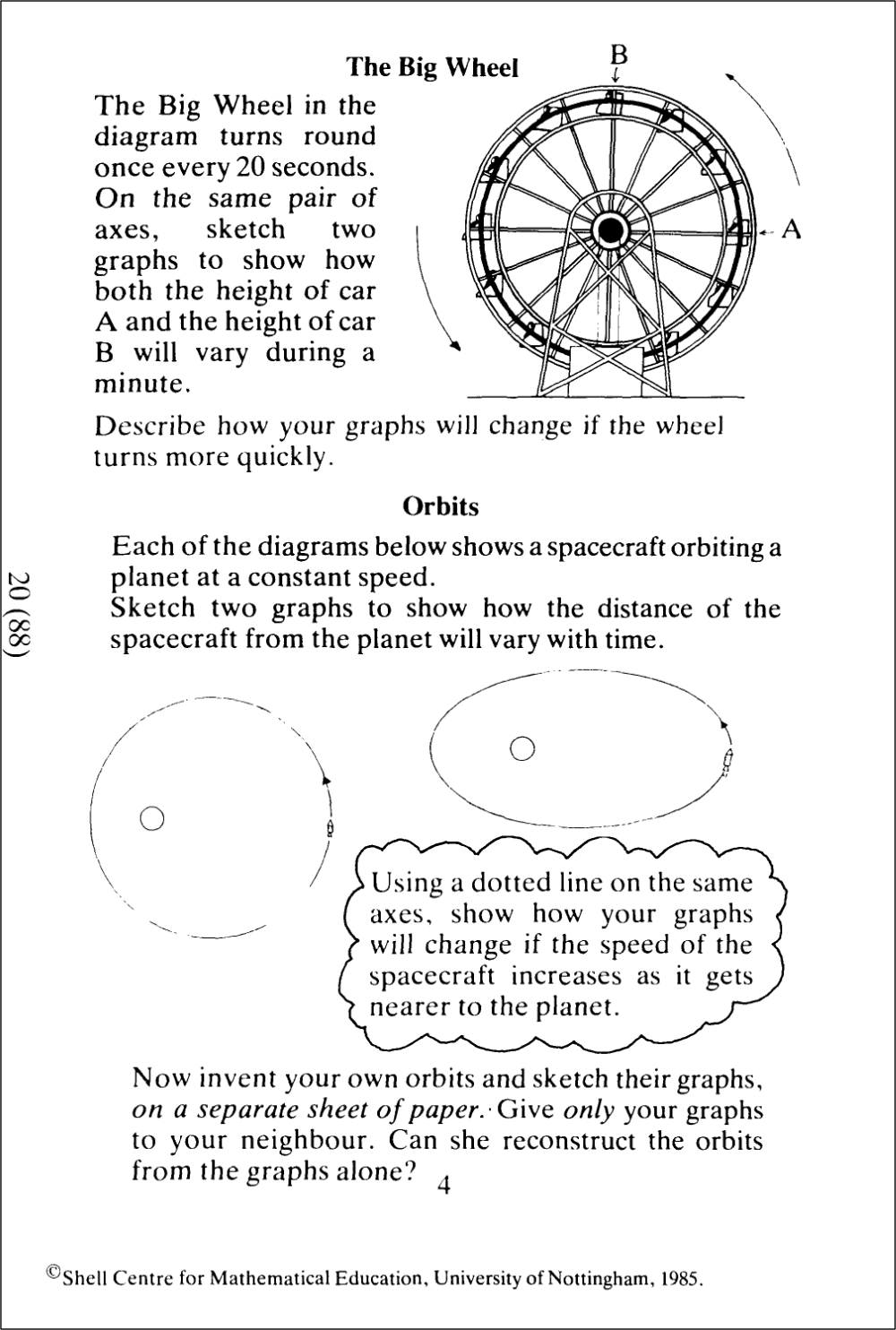
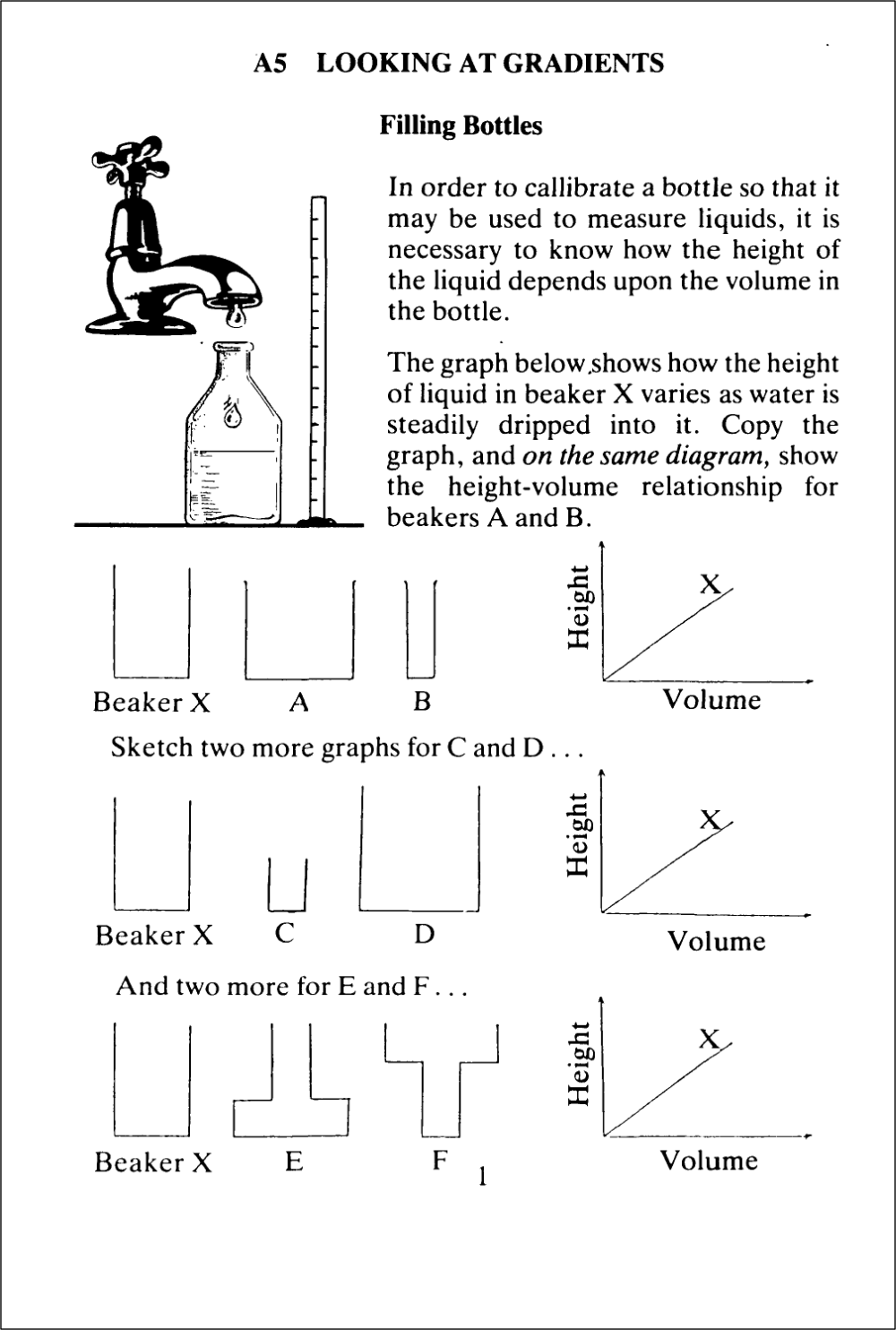
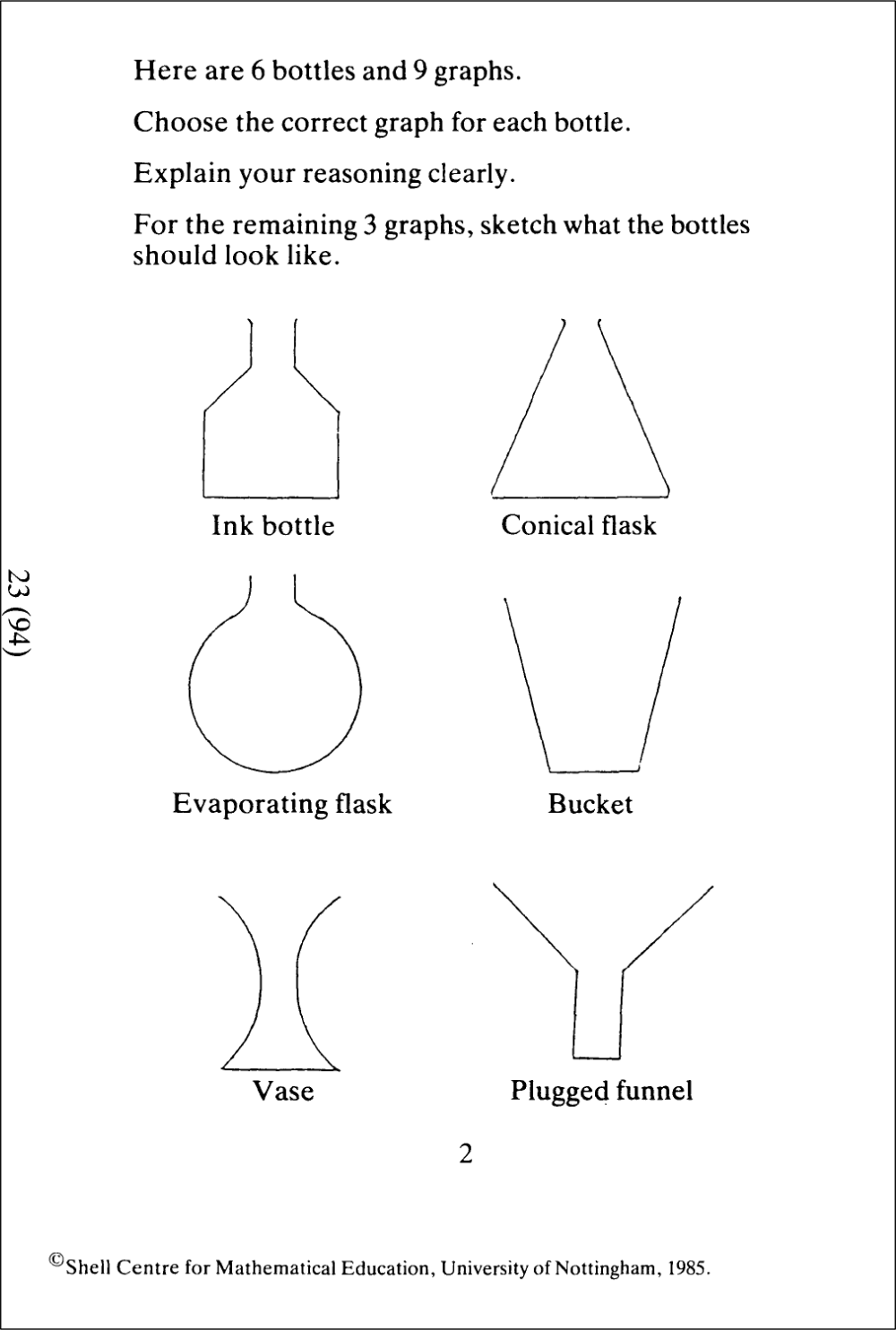
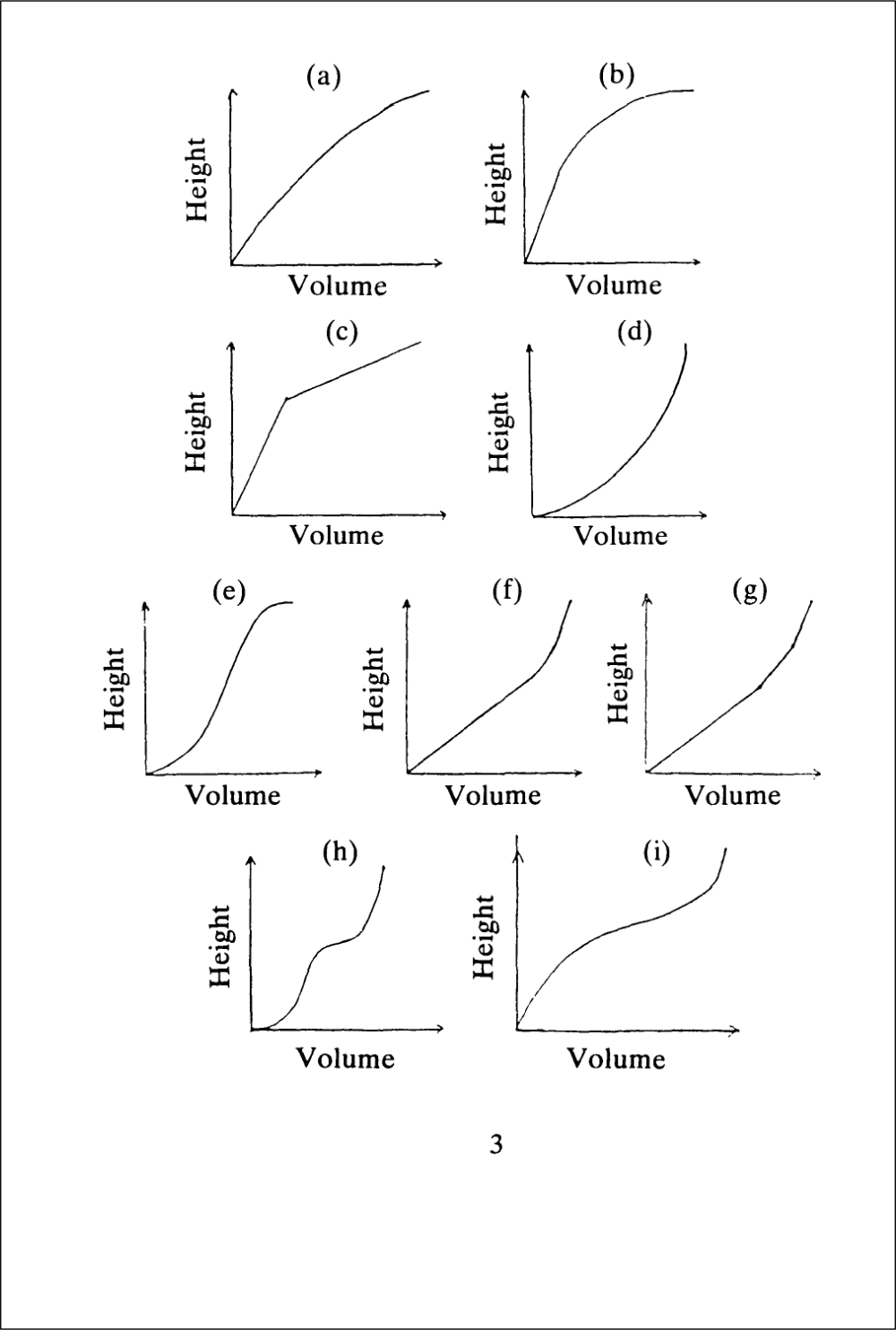
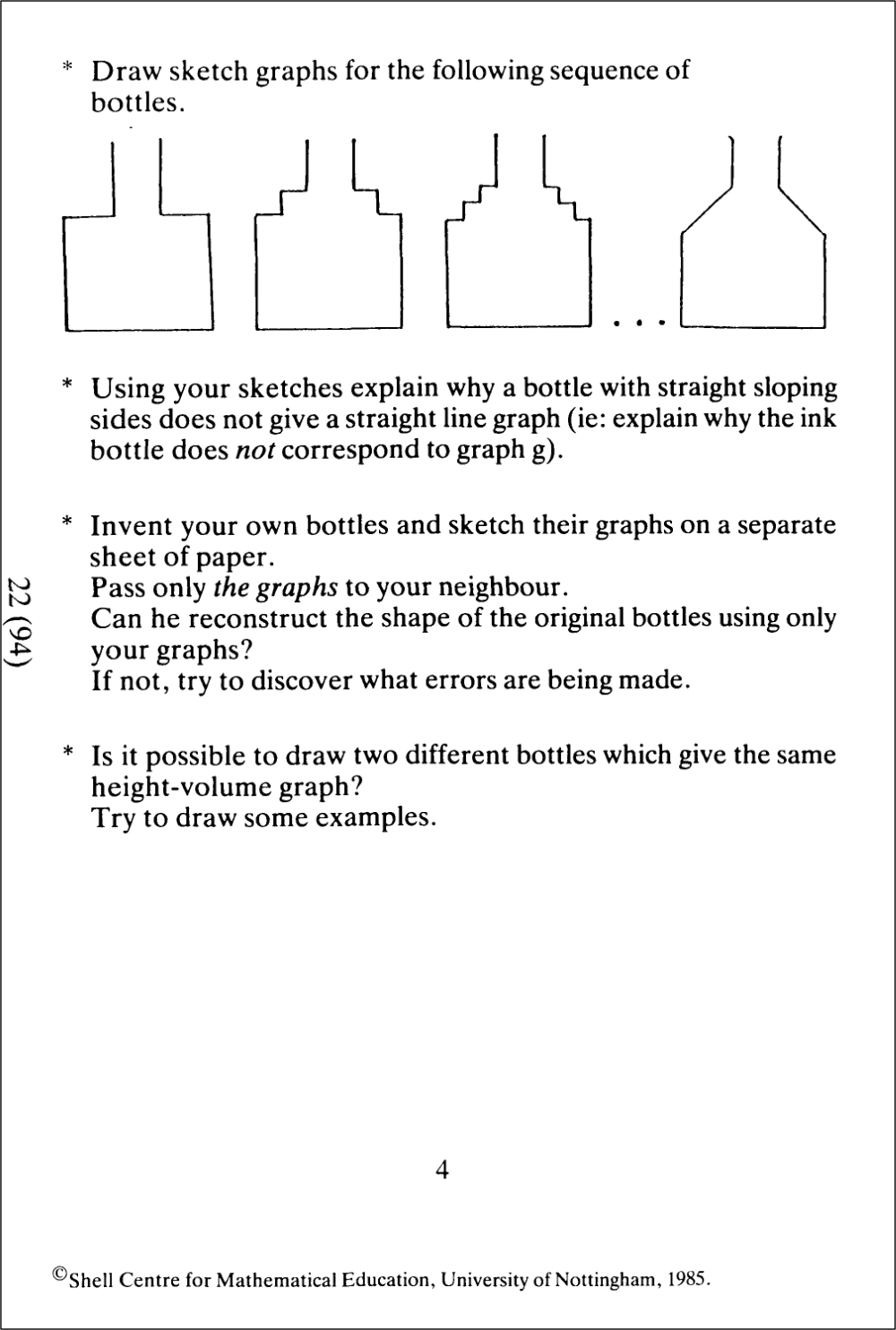
Links to materials:
- The Language of Functions and Graphs
- https://www.mathshell.com/materials.php?series=tss&item=lfg
- LFG Unit A extract
- http://educationaldesigner.org/ed/volume4/issue13/article53/links/materials/lfg_masters_a_paged.pdf